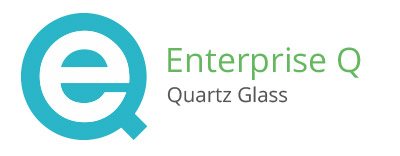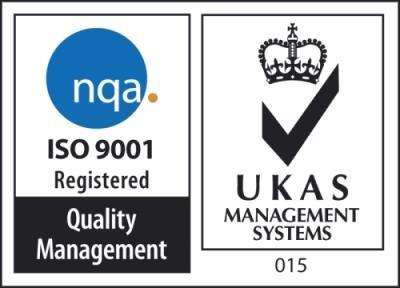Quartz – Material Grades
Standard Quartz and Doped Quartz
Generally, the starting point when discussing Quartz material grades is ‘GE214 clear fused Quartz’. This is an electrically-fused direct drawn material which is commonly used for many applications and markets throughout the world due to its excellent consistency in quality, both visually and dimensionally, high-purity, as well as its competitive price-point. Other equivalent grade materials (in terms of purity) from other producers are HSQ100 from Heraeus, PH300 from Philips, and RQ200 from Raesch.
As mentioned in the UV/IR transmission section above, although the general aim with Quartz is to remove all contaminants to gain the highest purity possible, there is often a specific requirement to block certain transmission wavelengths. In this case, dopants can be added to create an application-specific material, for example:
- GE214 = undoped standard material
- GE219 (also known as “ozone-free”, “germicidal”) = doped with Titanium
- GE254 (also known as “UV-block”) = doped with Cerium
In addition to natural Quartz (by which we mean, produced from mineral Quartz crystals), there is sometimes a need for higher purity than can be achieved from natural Quartz. In these cases, synthetic Quartz can be offered, which has contaminants counted at the ppb level (parts-per-billion) rather than ppm (parts-per-million). This is produced in various ways, often starting with a chemical reaction to produce the pure SiO2 compound which will be melted to form the synthetic Quartz in its purest form.
OH– Content
For many lamp and fibre optic applications, the moisture level within the Quartz is very critical as it causes unwanted effects to the end product, or to the overall lifetime of the Quartz as it reacts within its environment. This is often referred to as the OH– level as it’s an H2O molecule with a missing H atom bonded to the SiO2 Quartz lattice structure.
The OH level is quite high right after the Quartz glass has been produced (eg. 40 to 100 ppm), but this can be lowered through baking in a high vacuum environment.
Typically, a standard lamp tube would be vacuum-baked for 4 hours to produce an OH– content < 5 ppm (generally known as GE214). If required, a longer vacuum-bake of 40 hours can be applied to produce an OH- content < 1 ppm (generally known as GE214A, although other naming conventions have been coined in different regions, so it’s always best to ask for the OH– content rather than relying on the name).
Other production methods (eg. flame-fused Quartz and Plasma-fused Quartz) have a much higher OH– content although these are often referred to as being “locked-in”, as they cannot be vacuum-baked to lower the OH– content to the same levels as electrically-fused Quartz can be.
Chinese & Other Alternative Quartz
In addition to the high-purity Quartz grades supplied from the main Quartz producers (Momentive Performance Materials, Heraeus, Philips, Raesch, QSIL), there are numerous other producers who also produce high-grade material using a slightly lower grade of Silica sand (usually local). These alternatives (typically from Asia Pacific) are optically excellent (new equipment) and dimensionally acceptable for many applications (although with wider tolerances and less consistency), however the purity levels of these alternatives fall below the requirements of many applications. Due to the higher level of impurities, temperature resistance is lowered, and other lifetime failure modes are accelerated. For this reason, our view is that lower-purity alternatives are suitable for selected applications, but only with a full and transparent discussion over the details of the application in question to ensure that the material is fit-for-purpose.


